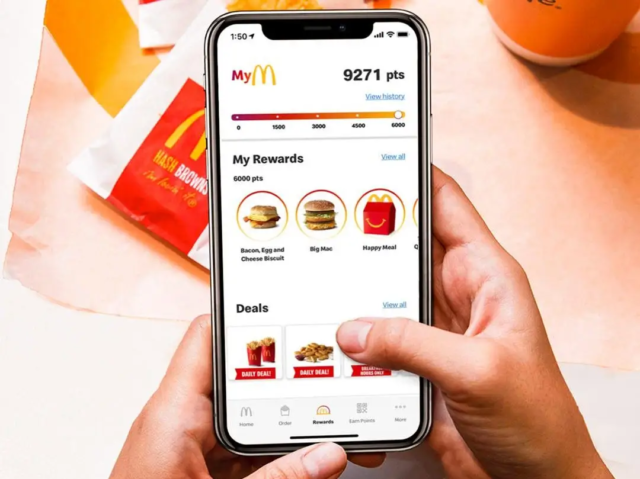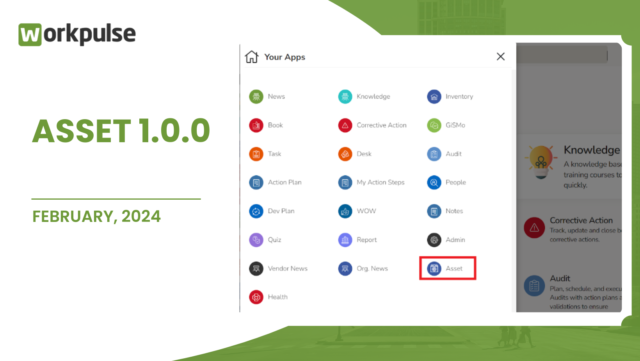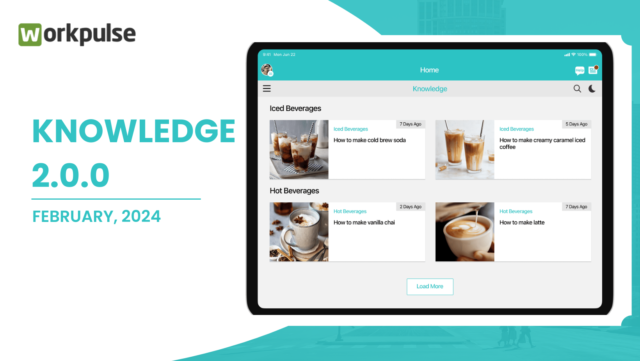Digital transformation for QSRs in 2022 looks highly promising as the foundation for growth had been set during the pandemic. Most businesses, especially the ones that were reluctant to adapt to technological implementations and innovations are either considering investing in it or have already begun the process of setting it up. It is interesting to see the way innovations are being done in all aspects of the restaurant and food service industry, right from placing orders and maintaining customer loyalty, to improving guest experience with a digital interface.
According to a recent study conducted by PYMNTS that compared the data between 2022 and 2019, the following was identified:
- 36% of customers are using mobile applications to order ahead more often
- 32% are ordering from restaurant websites more often
- 32% place a pickup order by phone more often
- 28% are using food delivery aggregators, such as Grubhub and DoorDash, more often.
All of these are clear indications that there is change in consumer behavior and engagement with business services and technology is playing a major role in ensuring superior experience. Over the last 2 years, people have become even more tech savvy and have now come to realize the potential of using technology to make their lives simpler and more convenient.
For the QSR industry, these technology integrations are no longer a “good-to-have” component; rather, they have become an essential need without which it would become challenging for restaurants to keep up with the trends and consumer demand. More than the product, it is the experience which determines the success or failure of a restaurant in today’s scenario.
While 2021 paved the way for digital transformation initiation, 2022 will be the accelerator. The technology innovations and implementations done this year will pave the path for further enhancements over the next 5 years. Brands like McDonalds and Burger King are already making investments in digital innovations to ensure they retain their customers and also attract new ones by delivering superior experience.
Let’s take a look at what 2022 has in store for the QSR industry in terms of digital transformation.
Intelligence driven food menu
Customer perception about the food menu is changing where they want more than just the name or description of the product and the price. Health conscious customers want to know the calorie count and health value of the food they are ordering. Some would like to know the origin of the ingredients used to make the product. It has become more about creating a value proposition than simply communicating commercial information.
However, the other aspect of intelligence driven food menus is the ability to forecast items based on consumer preferences, sales data, and past consumption trends. Not only will this help to minimize wastage, but also ensure relevant food items are served in keeping with the current demands.
Improved customer engagement through digital loyalty programs
The importance of retaining customers can never be undermined, especially in the QSR industry. Gone are the days where a courtesy call or friendly behavior would suffice to keep customers engaged. In this digital age, it is all about leveraging data and incentivizing customers for brand loyalty.
Top QSR brands like McDonalds and Burger King have already made significant investments in creating digital loyalty programs for engaging with their customers and providing incentives for continued association. Such initiatives also work towards attracting new customers for the business. In the first week of launch of the McDonalds Loyalty program, 21 million users signed up out of which 15 million users were found to be active. Not only did this lead to increased customer satisfaction, but also led to an increase in digital sales.
Leveraging technology for restaurant operations
One of the most significant digital transformations that is expected in 2022 is a major shift towards implementing technology for managing restaurant operations. QSRs have traditionally used the paper logbook or the manager’s logbook to ensure SOPs are followed and the required inspections are conducted as per schedule. The COVID pandemic actually contributed in bringing about a change in the perspective of most QSRs which had been using the traditional paper based approach.
While a good number of QSR locations across multiple brands and concepts have started leveraging technology for brand standards, food safety, restaurant audits, facility & equipment maintenance, and guest retention, 2022 will witness a considerable shift from paper to digital. Digital operations management solutions provide real time insights and seamless integration of SOPs which leads to reduced training time, improved efficiency, and accountability.
Robotic technology driving automation in restaurants
As interesting as this may sound, it is in fact, a reality that restaurants today have now started using robotic technology to prepare food, serve customers, and even manage check-outs. While robots can never truly replace the personal interactions that an employee may provide, but it is a technology that is being implemented. Considering the constant manpower issues and high employee turnover in the QSR industry, robotic technology actually provides a viable solution to ensure operations with minimal staff and ensure accuracy as per SOPs.
A good example of robotic technology in restaurants is a contactless coffee machine which uses AI/ML and magnetic theory to move a cup of coffee from the machine to the customer. In fact, robot bartenders are also in use. These robots use speech recognition and AI to speed up the process of cocktail mixing and serve customers faster. Moreover, these robots work with ultra high precision so guests may expect the same taste every single time.
Digital employee training solutions
With 150% employee turnover and a dearth of potential candidates to fill vacant positions, managing new resources can be a daunting challenge for any restaurant. Moreover, the associated training costs can put a financial burden on any restaurant, especially when there is a high turnover. In light of these circumstances, the need of the hour is to migrate to a digital employee training solution which not only makes the onboarding easy and quick, but also enables the modern workforce to get trained using a digital medium that they are comfortable with.
A digital employee training solution provides real time tracking of the progress, allows courses to be assigned automatically, and provides intuitive reports to understand competency and skill set across the organization. For trainers, managers, and the executive team, this information is crucial to empower employees to perform better and also to retain them. The most important aspect of these digital solutions is that they can be implemented in all organization sizes. Whether the team comprises 20 employees or 200, the training needs of every employee can be met effectively.
Digital transformation is an investment, not an expense
It is all about perspective when it comes to implementing any process, technology, or tool in an organization. While some may consider these to be an additional expense, it is in reality an investment that will only add value to the organization, create more growth opportunities, and ensure alignment with the current digital transformation trends. Technology implementation is inevitable and there is no way around it. The sooner restaurants embrace it, the more prepared they can be to meet guest expectations and changing demands.









